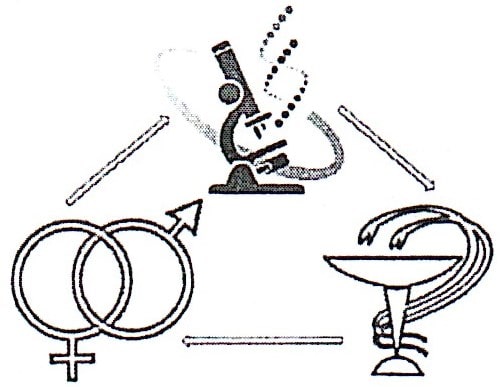Моделювання методом кореляційних плеяд впливу хижаків на протектуюче забарвлення коропа (cyprinus carpio)
Анотація
Досліджено дію на системні колориметричні параметри, значення яких можливо отримати шляхом комп’ютерної обробки цифрових зображень тварин, отриманих з дронів, що відбивають розмаїття та вирівнювання захисного протектуючого забарвлення тварин, а також, ступінь домінування в ньому червоної складової. Кольори, якими забарвлені тварини, виконують різні адаптивні функції: маскування, внутрішньовидового спілкування (зокрема, у контексті статевого відбору). Риби мають колір тіла, який маскує їх у природному середовищі. Це допомагає їм ховатися від хижаків. Послаблення дії хижака зменшує адаптаційне значення захисного протектуючого забарвлення жертви з певною зміною системних колориметричних параметрів, значення яких забезпечує адаптаційний, маскуючий ефект з відповідною зміною дії на системні колориметричні параметри захисного протектуючого забарвлення тварин стабілізуючого відбору. Робота виконана на матеріалі, викладеному у вільний доступ, а саме цифрових фото дикої форми Cyprinus carpio у природному середовищі. З використанням методу кореляційних плеяд та системних параметрів наступних двох розмірно-вікових груп риби: мальків (розміром менше 50 мм, дія на яких хижаків максимальна) та дорослих статевозрілих особин (розміром більше 500 мм, дія на яких хижаків мінімальна) отримані результати, які дозволяють запропонувати новий підхід до дистанційного визначення ознак зміни характеру впливу хижаків на жертву. Ознаки, роль яких виконують системні колориметричні параметри забарвлення природної ланки хижак-жертва. Це дозволяє оцінювати також ризики спалаху чисельності популяцій певних видів тварин. Ведеться пошук закономірностей впливу дії хижаків на захисне протектуюче забарвлення коропа (Cyprinus carpio).
Завантаження
Посилання
Bespalov, Yu., Kabalyants & P. Zuev, S. (2021). Relationships of diversity and evenness in adaptation strategies of the effect of protective coloration of animals. BioRxiv, 05.06.441914. https://doi.org/10.1101/2021.05.06.441914
Bespalov, Yu., Nosov, K. & Kabalyants, P. (2017). Discrete dynamical model of mechanisms determining the relations of biodiversity and stability at different levels of organization of living matter. BioRxiv. July 2017. http://dx.doi.org/10.1101/161687
Bukvareva, E. N. & Aleshchenko, G. M. (2013). Optimization, niche and neutral mechanisms in the formation of biodiversity. American Journal of Life Sciences, 1(4), 174-183. https://doi.org/10.11648/j.ajls.20130104.16
Choi, S.-H., Kim, B.-H., Lee, C.-H. & Lee, Y.-D. (2020). Response of body color change rearing under different light intensity conditions in farmed red spotted grouper, Epinephelus akaara. Fisheries and Aquatic Sciences. 23, https://fas.biomedcentral.com/articles/10.1186/s41240-020-00173-8
Colvin, M. E., Pierce, C. L., Stewart, T. W. & Grummer, S. E. (2012). Strategies to control a common carp population by pulsed commercial harvest. December. North American Journal of Fisheries Management, 32(6). http://dx.doi.org/10.1080/02755947.2012.728175
Coutinho, R. M. & Prado, P. I. (2015). Catastrophic regime shift in water reservoirs and São Paulo water supply crisis. PLoS One, 10(9). https://doi.org/10.1371%2Fjournal.pone.0138278
Cummings, C. L., Volk, K. M., Ulanova, A. A., Lam, D. T. U. H. & Ng, P. R. (2021). Emerging Biosecurity Threats and Responses. Emerging Threats of Synthetic Biology and Biotechnology, 13–36. https://link.springer.com/chapter/10.1007/978-94-024-2086-9_2
Duarte, R. C., Flores A.V. & Stevens, M. (2017). Camouflage through colour change: mechanisms, adaptive value and ecological significance. Philosophical Transactions of the Royal Society of London. Biological Sciences, 372 (1724). https://doi.org/10.1098/rstb.2016.0342
Endler, J. A. & Mappes, J. (2017). The current and future state of animal coloration research. Philosophical Transactions of the Royal Society of London B: Biological Sciences, 372, 1724. https://doi.org/10.1098/rstb.2016.0352
Green, J. B. A. (2021). Computational biology: Turing’s lessons in simplicity. Biophysical Journal, 120(19), 4139-4141. https://doi.org/10.1016/j.bpj.2021.08.041
Haber, A. & Dworkin, I. (2017). Disintegrating the fly: A mutational perspective on phenotypic integration and covariation. Evolution, 71, 1, 66-80. https://doi.org/10.1111/evo.13100
Hulme, P. E., Beggs, J. R., Binny, R. N. & Bray, J. P. (2023). Emerging advances in biosecurity to underpin human, animal, plant, and ecosystem health. Science. 26(9), 107462 https://doi.org/10.1016%2Fj.isci.2023.107462
Luo, M., Lu, G., Yin, H., Wang, L., Atuganile, M. & Dong, Z. (2021). Fish pigmentation and coloration: Molecular mechanisms and aquaculture perspectives. https://doi.org/10.1111/raq.12583
Lyach, R. (2020). The effect of a large-scale angling restriction in minimum angling size on harvest rates, recapture rates, and average body weight of harvested common carps Cyprinus carpio. Fisheries Research. 223, 105438. https://doi.org/10.1016/j.fishres.2019.105438.
Margalef, R. (1967). Some concepts relative to the organization of plankton. Oceanography and Marine Biology annual review, 5, 257-289.
Nobre, C. A., Marengo, J. A., Seluchi, M. E., Cuartas, A. L. & Alves, L. M. (2016). Some characteristics and impacts of the drought and water crisis in southeastern Brazil during 2014 and 2015. Journal of Water Resource and Protection. 8(2). http://dx.doi.org/10.4236/jwarp.2016.82022
Panayotova, I. N. & Horth, L. (2018). Modeling the impact of climate change on a rare color morph in fish. Ecological Modelling, 387, 10-16. https://doi.org/10.1016/j.ecolmodel.2018.08.008
Pangestu, M. E. (2023). To meet the climate crisis head-on, our approach to water storage must change. Worldbank. https://blogs.worldbank.org/voices/meet-climate-crisis-head-our-approach-water-storage-must-change
Pauly, D. & Zeller, D. (2016). Catch reconstructions reveal that global marine fisheries catches are higher than reported and declining. Nature Communications, Article number: 10244. https://www.nature.com/articles/ncomms10244
Snow, R. A., Porta, M. J. & Patterson, C. P. (2020). Common carp population size and characteristics in Lake Carl Etling, Oklahoma. Oklahoma Fishery Research Laboratory.
Sugimoto, M. (2002). Morphological color changes in fish: regulation of pigment cell density and morphology. Microscopy Research and Technique, 58, 496-503. https://analyticalsciencejournals.onlinelibrary.wiley.com/doi/epdf/10.1002/jemt.10168
Sumner, F. B. (1935). evidence for the protective value of changeable coloration in fishes. The American Naturalist. Vol. 69, No. 722 (May - Jun., 1935), 245-266.
Suprayudi, M. A., Amrillah, M. F. Q. B., Fauzi, I. A. & Yusuf,. D. H. (2022). Growth performance of common carp, Cyprinus carpio fed with different commercial feed in cirata reservoir cage culture system. IOP Conf. Ser.: Earth Environ. Sci., 1033 012009. https://iopscience.iop.org/article/10.1088/1755-1315/1033/1/012009/pdf
Svitačová K., Slavík, O. & Horký, P. (2023). Pigmentation potentially influences fish welfare in aquaculture. Applied Animal Behaviour Science, 262, 105903. https://doi.org/10.1016/j.applanim.2023.105903
Turing, A. M. (1952). The Chemical Basis of Morphogenesis. Philosophical Transactions of the Royal Society of London. Series B, Biological Sciences. 237(641), 37–72. https://doi.org/10.1098/rstb.1952.0012
Verrill, A. E. (1897). Nocturnal protective coloration of Mammals, Birds, Fishes, Insects, Etc. The American Naturalist, 31(362), 99-103. https://www.jstor.org/stable/2452743
Vissio, P. G., Darias, M. J., Yorio, M. P. D., Sirkin, D. I. P. & Delgadin, T. H. H. (2021). Fish skin pigmentation in aquaculture: The influence of rearing conditions and its neuroendocrine regulation. General and Comparative Endocrinology, 301, 113662. https://doi.org/10.1016/j.ygcen.2020.113662
Vittadello, S. T., Leyshon, T., Schnoerr, D. & Stumpf, M. P. H. (2021). Turing pattern design principles and their robustness. Philosophical Transactions A 379(2213). http://dx.doi.org/10.1098/rsta.2020.0272
Yadav, S. (2018). Correlation analysis in biological studies. Journal of the Practice of Cardiovascular Sciences. 4(2), 116. http://dx.doi.org/10.4103/jpcs.jpcs_31_18
Zavriev, S. K. (2015). Risks and threats in biosecurity area: problem analysis and search for optimal solutions in contemporary conditions. World economy and international relations, 9, 57–68. http://dx.doi.org/10.20542/0131-2227-2015-9-57-68
Переглядів анотації: 220 Завантажень PDF: 97





